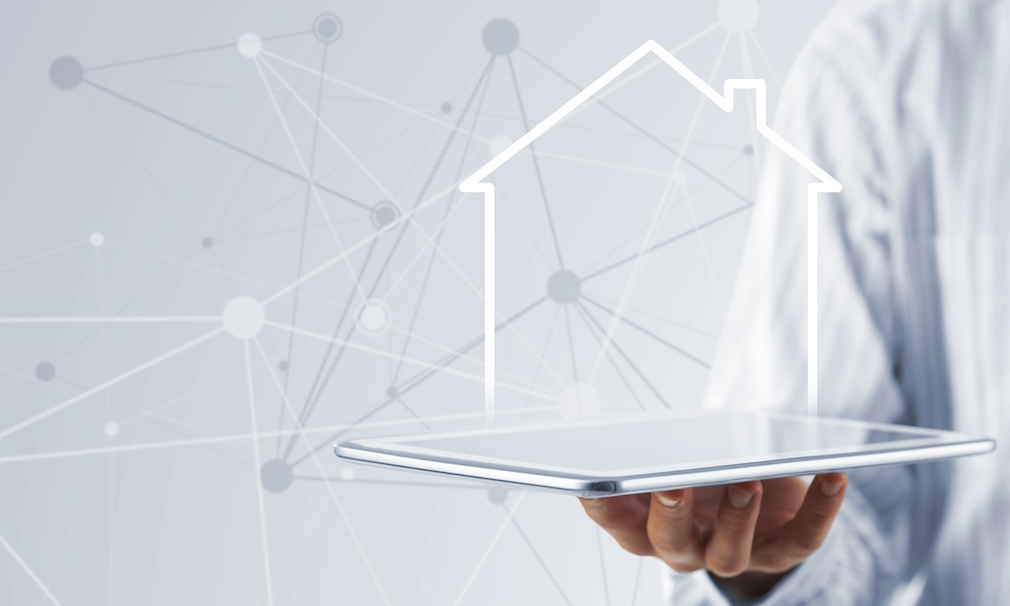With the COVID-19 pandemic discouraging or entirely halting in-person meetings with lenders and appraisers, the adoption of digital mortgages has accelerated. Advances in technology have stepped up to address the stickiest non-digital segments of the mortgage application process.
The current situation has added fuel to a decade-long trend among banks and lenders to provide more and better digital products and services. For mortgage lenders, that means offering as much of an end-to-end experience – underwriting to approval to closing – as possible for prospective borrowers. This has grown from an electronic application to include more complex parts of the process, such as notarization and identification, employment and income verification, even inspection and appraisal.

Guest Author
At the same time, digital mortgage technologies – especially advances in video applications – have evolved enough to successfully balance borrowers’ need for speed with a human touch. Complex steps that often require human interaction, such as explaining final loan documents or understanding mortgage terms and options, can increasingly be done digitally.
As COVID-19 has complicated or discouraged homebuying, it also accelerated existing trends in mortgage lending. Those lenders that have already invested significantly in developing sophisticated and proven online and mobile solutions sit in the best position to benefit from the shift.
Prioritizing the front end
Mortgage lenders that have spent heavily to develop digital offerings have chosen to focus on enhancing the consumer-facing experience, according to a Fannie Mae survey on lender sentiment. Lenders have set their sights on efficiency, emphasizing more consultative staff, simpler applications and shorter cycle times.
Front-end enhancements enable customers to start the mortgage process and complete an application while helping sales teams upload application information and gather documents more efficiently. Lenders often lean on fintech firms to supplement their digital transformation efforts. These fintechs have designed automated streams to validate data, confirm assets and deposit balances at various banking institutions, substantiate income through employment verification solutions such as ADP, and more.
If lenders weren’t focusing on their digital front end before COVID-19, they should be now. For example, for TIAA Bank’s own digital front end, the percentage of our overall application flow it handled climbed from 30% in April 2019 to 75% this April.
Another segment of the mortgage process close to the front end that has seen a wave of digitalization is asset verification. This has been a common next step for development once lenders have the front end fully online. And like the front end, it has seen a surge in use: following the crisis, our own digital asset verification tool has been used by more than 50% of loan applicants for the first time.
Appraising COVID-19’s effects
When COVID-19 struck and lockdown policies proliferated, numbers for closings plunged, but the absolute volume of mortgage applications held steady as refinancings increased dramatically. It has been less a spring homebuying season, and more of a spring refi season.
Lenders with established digital front ends were able to keep mortgage clients. As call centers filled up rapidly with refinance inquiries, they could divert prospective borrowers quickly to the digital front end to start applications online.
Still, the pandemic’s effects aggravated a bottleneck in the digital mortgage process: appraisals. Though some lenders developed back-end features that enabled them to conduct eClosings or a digital hybrid closing, home appraisal visits still needed to be done in person. For homeowners and appraisers who did not wish to put their health at risk through in-person home evaluations, technology and compromise have helped.
In response, lenders and fintech partners have developed applications that allow homeowners to give virtual tours. In addition, moving companies can provide a firm quote estimate, all through video disclosure. Appraisers can combine these with Google Earth imagery to hold a virtual drive-by if they’re uncomfortable with an actual one.
Throughout the crisis, the government-sponsored entities that back the vast majority of the $2.3 trillion in U.S. mortgages have grown more flexible about allowing some exterior-only evaluations. Expect some form of assessment on how this softening of restrictions has gone when the crisis ends.
Video is the future
Video apps such as Zoom, Webex and others have turbo-charged digital mortgages by enabling loan officers to consult with borrowers throughout the application process. As more Americans get used to Zoom and other video platforms during extended time at home, these tools will only become more normalized in the homebuying process.
Looking forward, video apps may help complete the digital transformation of the mortgage process, from origination to closing. More closing agents may soon embrace Zoom sessions. For notarization, borrowers may soon be able to hold their driver licenses up to screens for verification and eCertification. Applicants may soon sign documents through DocuSign. And they may soon send out preliminary disclosures to replace traditional good faith estimates, as well as distribute closing details electronically. Lenders can also provide a click-to-video capability to engage those who need more help along the way.
While common financial tasks like depositing your paycheck and saving for retirement have been digital for years, mortgages have been stubbornly stuck on paper.
The current crisis has given the process the jolt it needs to move online, and I am optimistic that we are closer than ever to a mortgage whose only physical component is the home itself.






